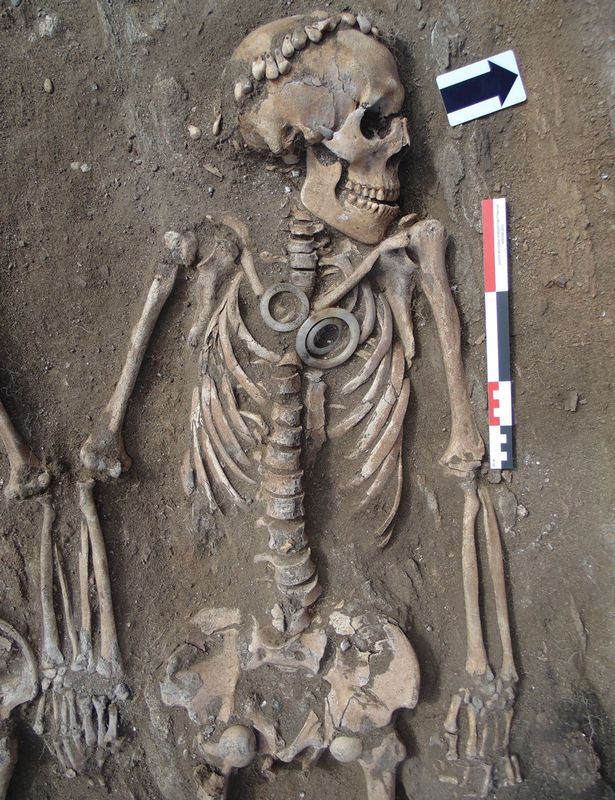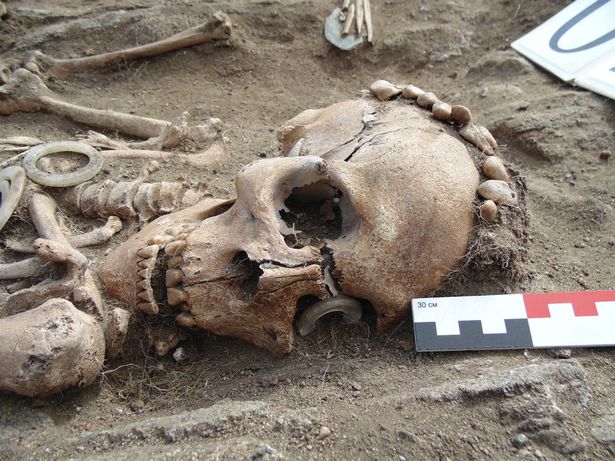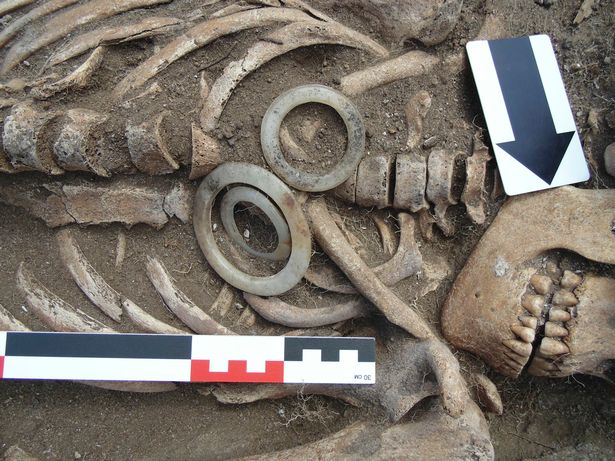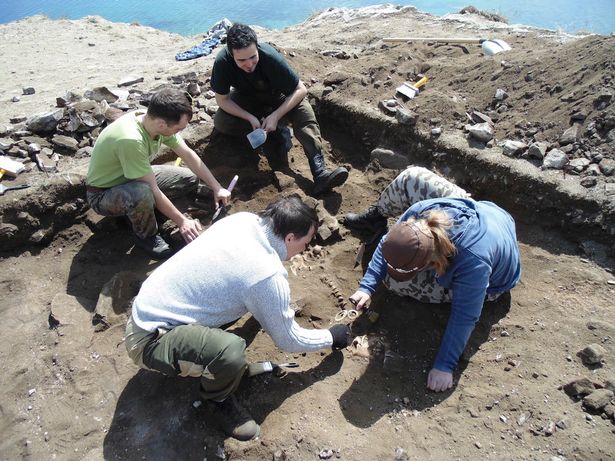Holding hands for 5,000 years, a couple with mysterious jade rings and dagger
An elderly couple who have held hands for the last five thousand years were revealed by archaeologists in a Bronze Age grave. The skeletons, thought an ancient dignitary and his wife or lover, were uncovered at a burial site overlooking Baikal lake in Siberia.

They were found decorated with unusual rings made of rare white jade, one of which was placed above the man eye socket. It is thought that the couple is from the ancient Bronze Age ‘Glazkov Culture,’ the oldest and deepest lake in the world that lived around Baikal.
Intriguingly, Russian scientists have not yet revealed details of a ‘metal implement’ discovered inside a leather pouch placed between the man’s kneecaps.

Three jade rings were found placed on the male’s chest, while a 20-inch jade dagger, made from the same rare stone, was also unearthed inside the grave.
Archaeologist Dr Dmitry Kichigin, of Irkutsk National Research Technical University, said the rings were ‘somehow connected’ with the pair’s ‘ideas about the afterlife’.

“In the grave we found male and female skeletons, lying on their backs, heads to the west, hand in hand,” he said.
“It would be very interesting to find out the purposes of the massive jade knife, which we found near the woman, was used for.
“We also found some metal implement in a small leather bag between male’s kneecaps.”
Pendants of red deer and musk deer teeth were found on the man’s skull, and around the feet.
But while the male skeleton is complete, rodents have destroyed the upper part of the female.

Dr Kichigin said he believed the couple could be ‘an owner and his concubine’.
The burial site near the lake is at a ‘sacred place for ancient people’, where Neolithic remains were also discovered.

The precise location is being kept secret to avoid it being ransacked by treasure hunters.
“We can expect a lot of interesting discoveries on this archaeological site, so we plan to continue our work next year,” Dr Kichigin told The Siberian Times.





